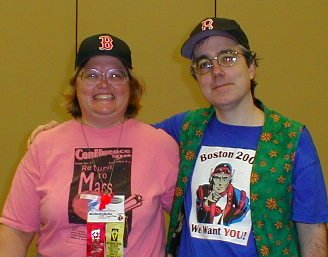The Last Witchfinder by James Morrow
Jennet Stearne is the daughter of a witchfinder in England. Her brother wants to follow in her father’s footsteps, but she is of a more scientific bent. Under the tutelage of her aunt, she takes in an interest in all forms of natural philosophy – astronomy, physics, biology, and so on – and develops a good scientific mind. But when her aunt is accused and then condemned for witchcraft, Jennet dedicates her life to one thing: scientifically proving that the world isn’t controlled by demons but rather by natural forces.
Jennet tries to recruit Isaac Newton, only to be tricked by Robert Hooke, masquerading as Newton. She decides to pursue her studies on her own, but things change when her father is sent to America. A series of adventures follow, in which Jennet witnesses the Salem Witch Trials (strengthening her resolve), is kidnapped by Indians and becomes part of tribe, escapes, meets Ben Franklin, eventually meets Newton himself, is shipwrecked, faces pirates, and is eventually herself tried for witchcraft. At the same time, her brother ascends to the post of witchfinder general for Massachusetts and marries the most hysterical accuser from the Salem trials. It’s a remarkable sequence, combining as it does such great adventure with a serious examination of the issues involving faith, fundamentalism, and basic world views.
Morrow came to Pittsburgh a while back and read from The Last Witchfinder. When he did, he talked about how one of the things that got him thinking about the book was something he’d read (sorry, I don’t remember the author) which stated that, if you look at the Renaissance, it’s not best viewed as a time of a great explosion of reason but rather as a demon-obsessed time. Most everyone viewed the world as being strongly influenced by demons and spirits. Common natural phenomena were thought to be under the control of such invisible forces. Moreover, human beings were thought to traffic with Satan and be able to direct these demons. Someone’s milk has gone sour? Well, he can remember when, two weeks earlier, he sold somewhat bad grain to the old woman up the road. She must be a witch who was getting back at him; how else explain the bad milk.
Witch finding was rationalized. The witchfineders used logic, arguing from a few lines in the bible, to build a huge rationale for what they were doing as well as a series of tests to prove that someone was a witch. The tests seem utterly nonsensical to us, but they were taken very seriously and more so considered completely rational by those who used them. The result was carnage over parts of Europe, with possibly several hundred thousand people killed over several centuries. (It was far worse in Central and Eastern Europe than it ever got in Western Europe or England.) Morrow does a good job of working these details into the novel.
The real heart of the novel though is the character of Jennet Stearne. She’s a remarkably well drawn and interesting character (as well as the type of person many of us would like to know). She’s smart, resourceful, brave, and never dull. I’m not sure if the comparison quite holds, but she in some ways can be viewed as a Heinlein “competent man” (in which case her aunt also fits in Heinleinesqe sort of way).
While Morrow clearly takes aim at the witchfinders and those who believe the world is under the control of demons, it’s not the same sort of biting satire as in his novels like Only Begotten Daughter and Towing Jehovah. He skewers them in a much more straightforward way, simply by showing their world views and actions. At the same time, he makes it clear that it’s not religion he’s attacking – it’s fanaticism. Many of the characters we side with in the book are religious – they’re just not fanatic fundamentalists.
That’s not to say that book doesn’t have moments of humor. It has a number of quite amusing moments, ranging from Jennet’s dealing with the book left to her by her aunt (a sex manual her aunt had written) to her and Ben’s encounter with the pirates. (The head pirate, discovering them shipwrecked on an island and finding out that Ben is a printer, immediately says “I have this manuscript …”) And the scene where Jennet and Ben first make love is a classic.
As I noted earlier, Morrow structures the book as having been written by the Principia. I wasn’t sure what to make of this at first – was it an addition or an unnecessary distraction. At first, I was leaning toward the latter, but as the novel progressed, it became clear that this technique was a novel way to allow both for info dumps and for some degree of editorializing without actually injecting this into the main novel. The Principia, for example, interrupts the novel to provide a couple of pages on the history of witch finding. So, in the end, I think these interruptions mostly worked (though a few could have been trimmed back a bit).
In the end, this is a fine novel that works well on a number of levels and should be of interest to those who like historical, those interested in the birth of the scientific worldview, or even those who just want a good adventure story, since it’s all of these and more.


0 Comments:
Post a Comment
<< Home